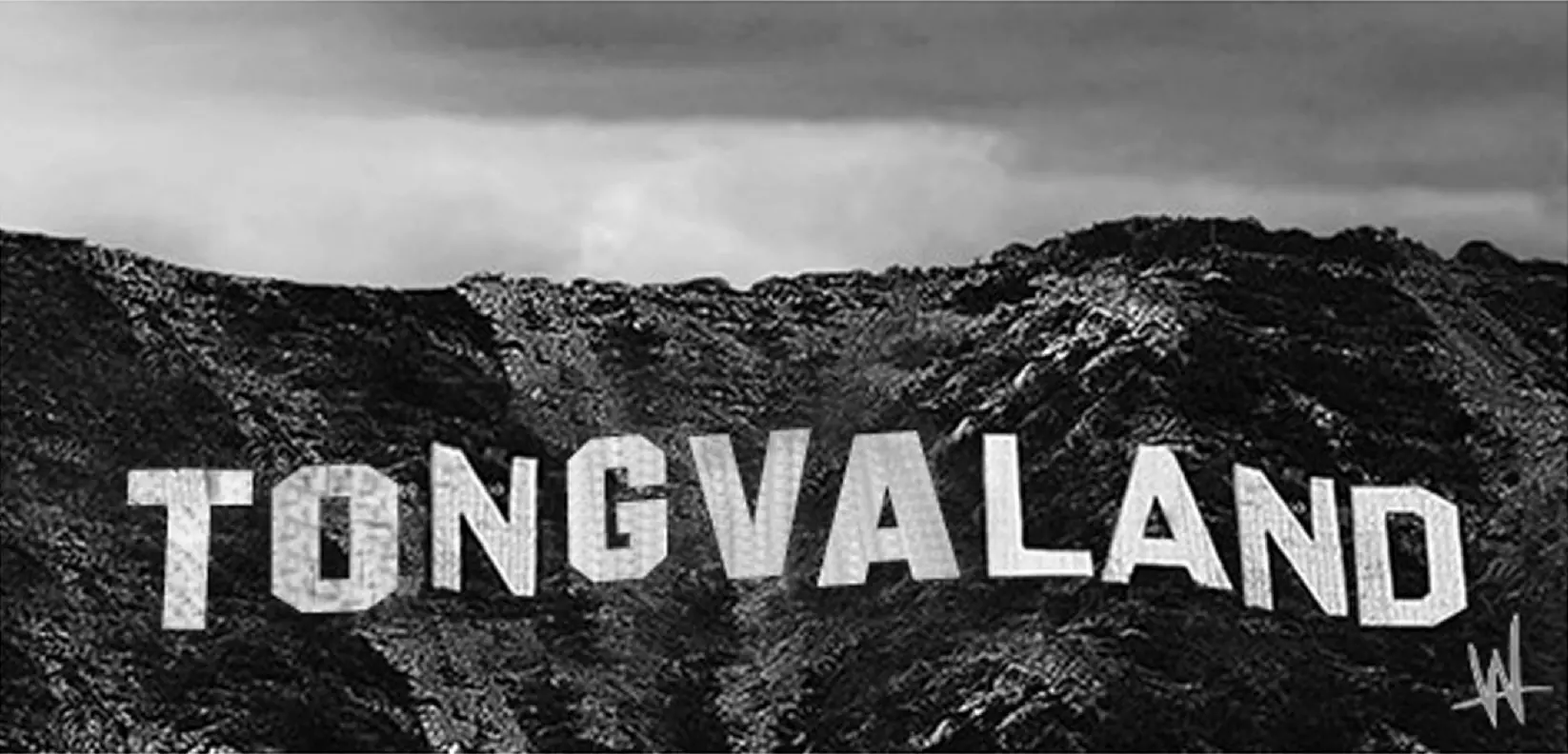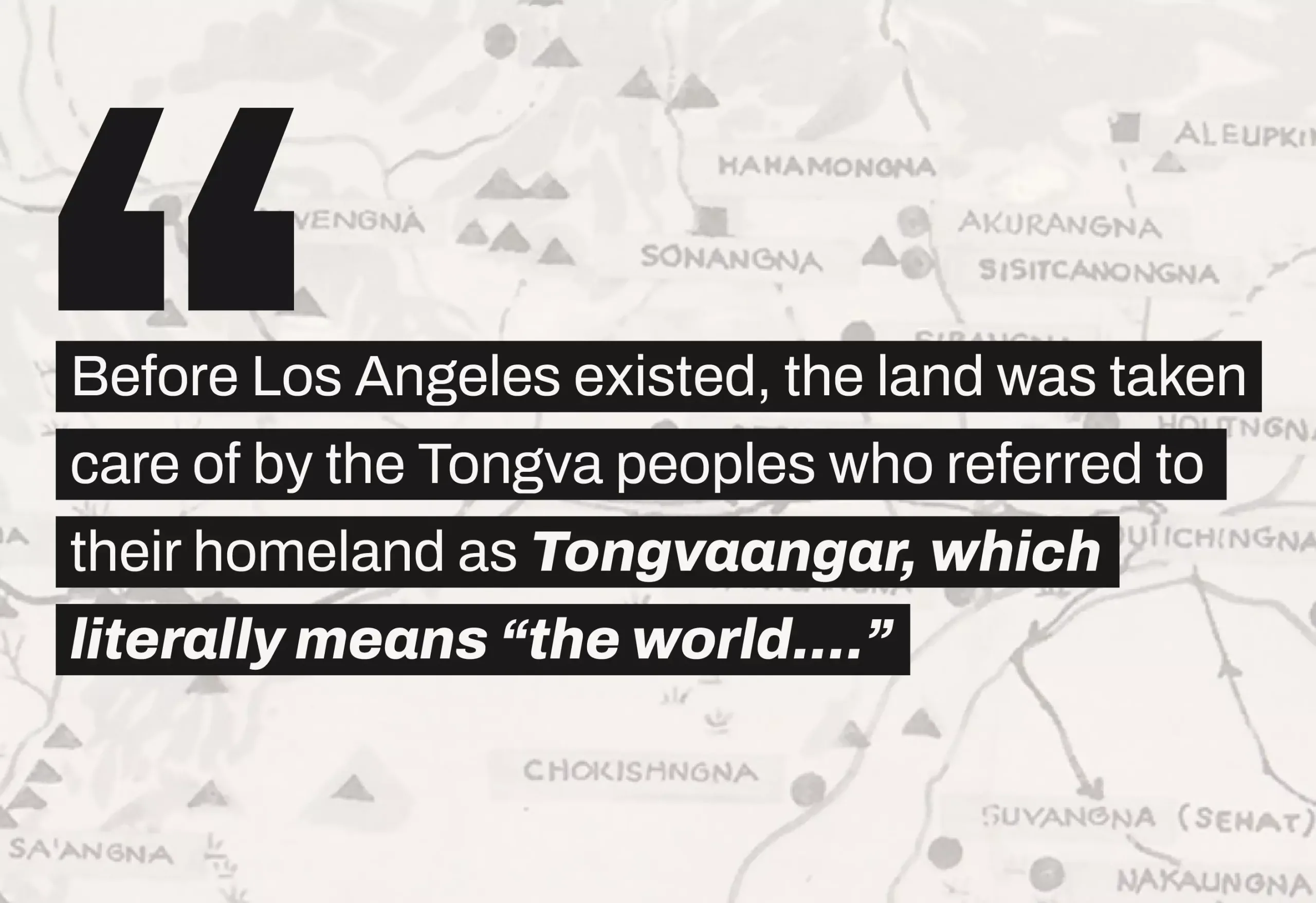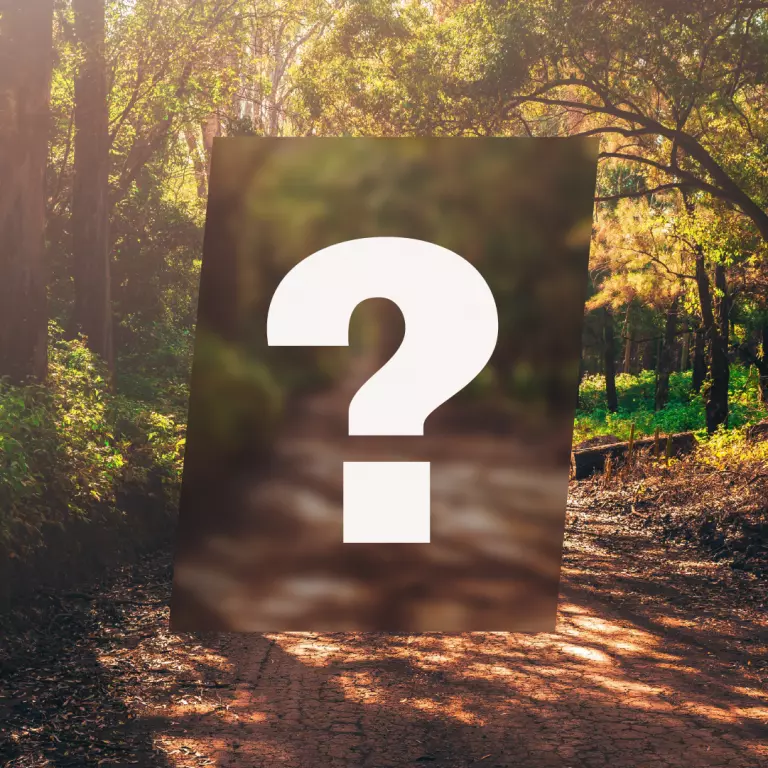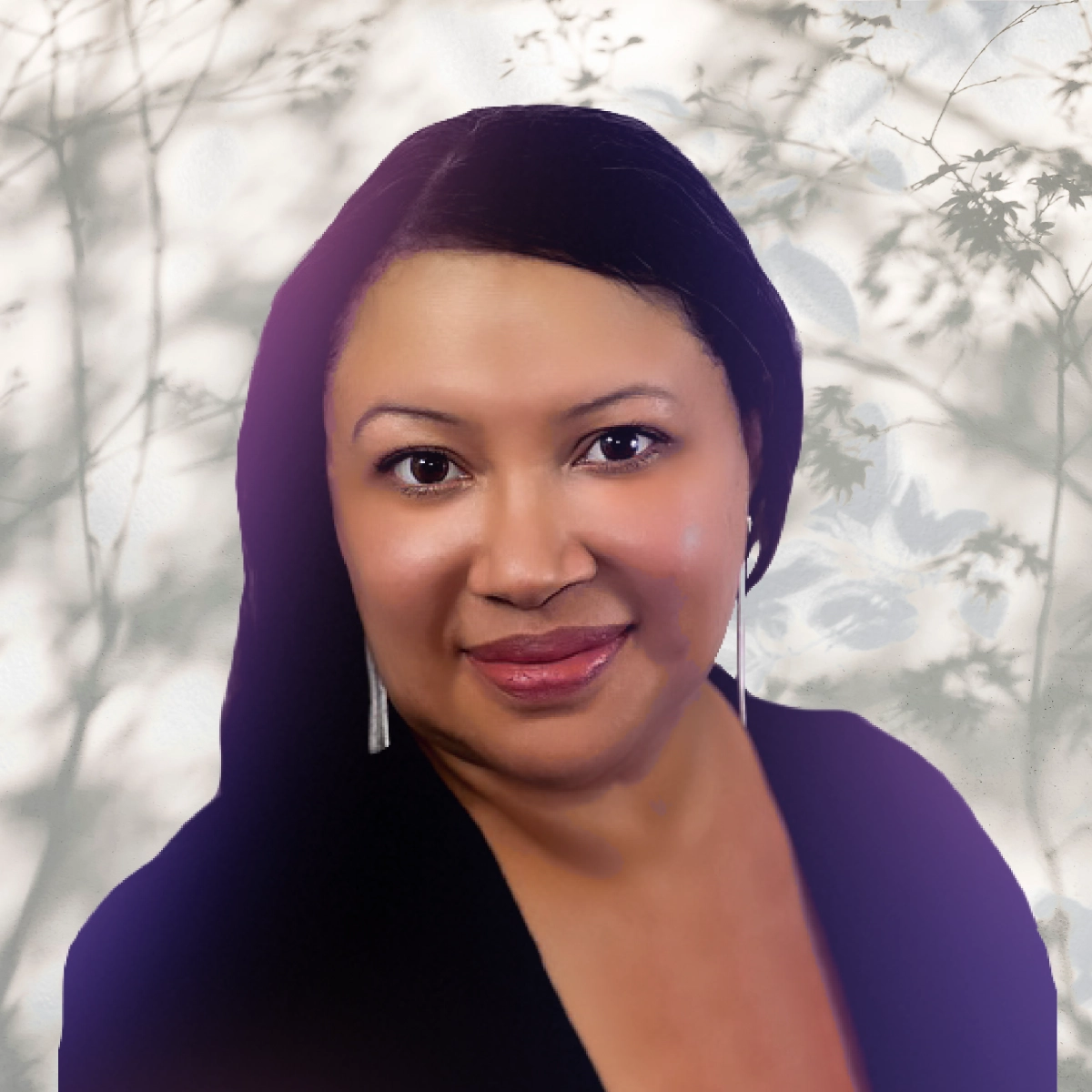Ask the average American if they have heard of Los Angeles, California and there is a good chance that it will be answered with a rhetorical question. Who hasn’t heard of LA? As the epicenter of America’s film and television industry with Hollywood, it goes without saying that Los Angeles has permeated popular culture across the globe. However, if we were to ask the average person if they have ever heard about the Tongva peoples, how many would answer yes? Despite the immense historical attention Los Angeles has received over the generations, not many people seem to know about the history of the land and its original people. After all, Los Angeles and its illustrious Hollywood sign did not always exist. So who are the Tongva peoples and where have they gone?
Before Los Angeles existed, the land was taken care of by the Tongva peoples who referred to their homeland as Tongvaangar, which literally means “the world.” Prior to the arrival of Spanish settlers in 1769, Tongvaangar was home to around 5,000 people across nearly 100 independent villages that encompassed the Los Angeles Basin as well as much of the entire county. The Tongva peoples ethically took care of the lands in which they resided; they saw it as a relationship of sorts that requires balance. It is no surprise that when the Spanish settlers made contact with Tongvaangar, they arrived at a wealth of agriculture which they sought to exploit alongside the natives as they were enslaved. Between 1769-1840, the land was drastically changed as the Spanish brought with them disease, invasive species, and livestock which altered the ecological balance of the region. Moreover, the Spanish settlers forced the Tongva people to relocate to three different Catholic missions, further ripping Tongva people from their culture and homelands.
It is important to urge that until this very day, the Tongva peoples remain living yet are largely invisible as they are still trying to piece back the culture as well as the land that was taken from them immorally. Many of the traditional practices and rituals that empower and heal the Tongva peoples cannot effectively take place due to barriers of land ownership. Take for example the village of Povuu’nga, the “place of emergence” where the Tongva peoples consider the origin of their existence. It is a sacred land, yet much of California State University, Long Beach campus occupies the territory and has disrespected Tongva land by dumping debris and dirt on the lands in 2019. This is an ongoing issue at large and more work needs to be done to help bring justice and facilitate healing to the souls of the Tongva.

Nonetheless, it is worth noting that there is great work being done in the name of the Tongva peoples. One Indigenous artist of mixed identity, in particular, Weshoyot Alvitre who is a comic book artist, writer, and illustrator, has worked tirelessly to preserve and enhance the ways of the Tongva peoples. Alvitre is both Tongva and Scottish and was born in the Santa Monica Mountains on the property of Satwiwa, a cultural center started by her father Art Alvitre. She was raised connected to the land and learned the traditional knowledge of her people which serves as the foundation for much of her inspiration for her creative works.
One of her noteworthy art pieces was in collaboration with a larger installation titled #Tongvaland which included a handful of Indigenous Tongva artists. Each artist designed a visual that was captured by photographer Cara Romero, a California-born Chemehuevi Indian woman. The project featured seven total billboards which were installed across the Greater Los Angeles Area simultaneously during August and September of 2021. Alvitre’s ‘Tongvaland’ piece was publicized on two billboards, grabbing people’s attention because it was created in the style of the infamous Hollywood sign. Overall, the #Tongvaland project was a great representation of the type of action and process necessary to bring recognition and justice to Indigenous people. Before proper action can take place for the empowerment of Indigenous populations like the Tongva, a certain quality of attention needs to be paid to their history and their marginalized stories. The Tongvaland project as a whole served both those outlets by appealing to provocative visuals as well as inspiring necessary dialogue and conversations.

Weshoyot Alvitre is constantly working on projects in the name of her Tongva identity and even admits to having a difficult time separating herself from her work as it is highly personal and usually in response to very harsh realities and stories of her people. You can check out her other work and support her artistry and reclamation work by visiting her site and shop. Please consider her words regarding her art: “My own work is not your ‘superhero, aesthetic, not mainstream type’ it is maybe experimental.” If you are a settler who wishes to help, please approach the Tongva peoples’ culture with the utmost respect, education, and humility. It is an unfortunate reality that the Tongva peoples, despite being a well-documented and prominent tribe, are not federally recognized. For this reason, it is crucial to truly absorb the words of Alvitre from her Instagram post regarding her billboard: “Never forget the original people of this land, those who have been here for over 15,000 years easily, according to what scientists feel comfortable recognizing, those who have been here since time immemorial to those who listen to Us…Never forget that my tribe’s traditional lands span from the spiritual center of our very emergence at Puvungna, to the mountains that wrap around Los Angeles Basin like a mother’s protective hand.”





